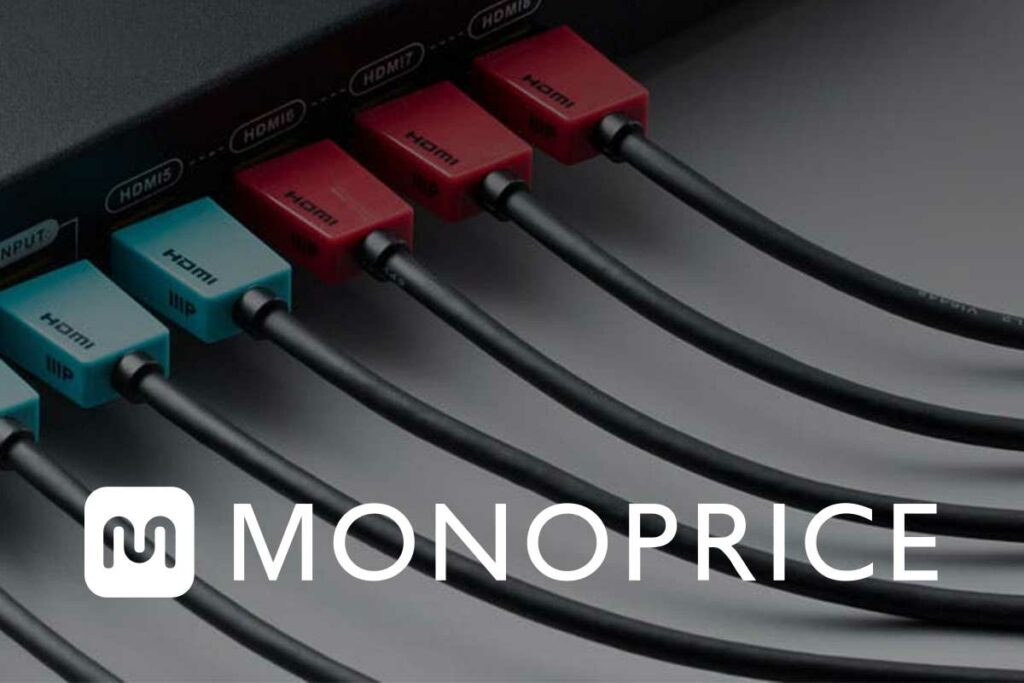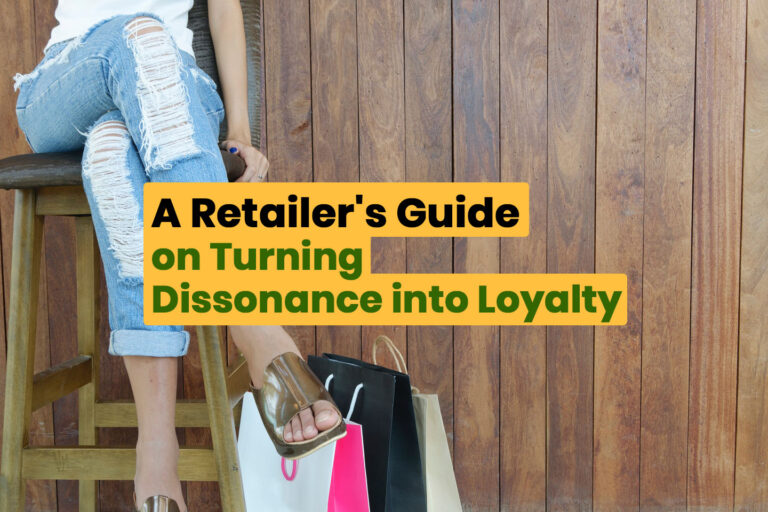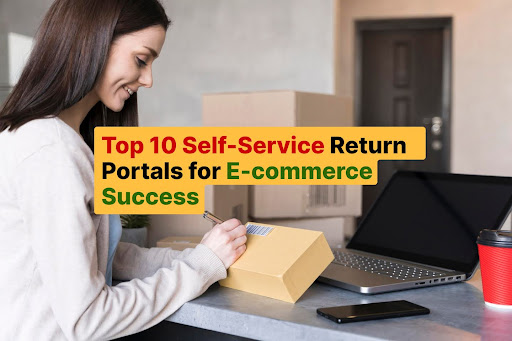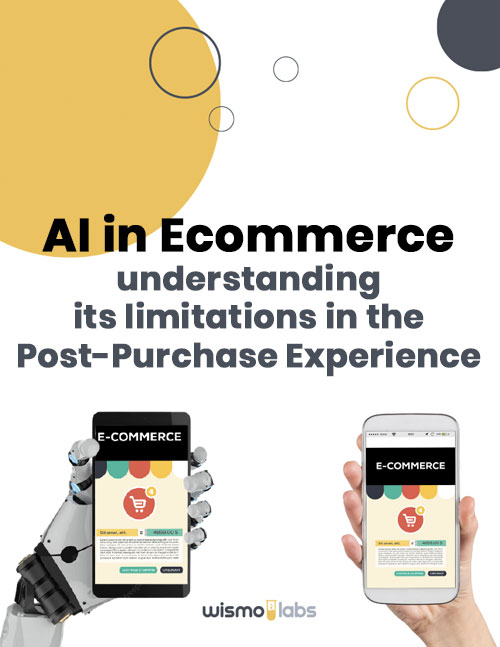In the bustling world of ecommerce, the customer journey doesn’t end at the click of the “purchase” button. It unfolds into a path that either cements a lasting relationship or paves the way to a one-time, dissatisfactory transaction. One of the pivotal factors influencing this journey is post-purchase dissonance, a notion stemming from Leon Festinger’s Cognitive Dissonance Theory.
Understanding and addressing post-purchase dissonance is not merely about rectifying a single issue of buyer’s remore; it’s a holistic approach towards refining the customer experience post-purchase, with the overarching aim of nurturing satisfied customers who, in turn, drive profitability. This comprehensive guide aims to unravel the concept of post-purchase dissonance and provide actionable strategies for ecommerce retailers to mitigate buyer’s remorse, fostering a culture of satisfaction and loyalty.
What is Post Purchase Dissonance
Post-purchase dissonance, also known as buyer’s remorse, occurs when there’s a discord between the expected value of a purchase and the actual value perceived after the purchase. While this cognitive dissonance is not new, its ramifications are magnified in the digital retail sphere, where the lack of tangible interaction with the product pre-purchase can foster mismatched expectations. This dissonance not only affects customer satisfaction but also impacts their likelihood to make future purchases, and may lead to negative reviews, thereby potentially bringing the overall rating of the entire ecommerce operation down. Understanding and addressing post-purchase dissonance is crucial for ecommerce retailers to nurture enduring customer relationships and ensure business growth.

The Genesis of Post-Purchase Dissonance
Several elements can fuel post-purchase dissonance in the ecommerce sector. From unrealistic expectations and insufficient product information to a high price point, each of these factors can potentially create a chasm between expectation and reality, which is where post-purchase dissonance festers.
Several elements can fuel post-purchase dissonance in the ecommerce sector. Factors such as mismanaged expectations stemming from lack of clear product descriptions, inadequate imagery, absence of customer reviews, or a fear of cumbersome return or exchange process can carve a gap between anticipation and reality, thereby breeding grounds for post-purchase dissonance. While it’s not possible to completely avoid dissonance, managing it early, right from the home page, product pages, checkout process right through post-purchase communications, is crucial.
Understanding the nuances of post-purchase dissonance leads the way for a deeper exploration into measuring its impact and devising strategies for alleviation.
Reducing Post-Purchase Dissonance
The following overview outlines key points to handle at different stages of the customer journey to significantly reduce post-purchase dissonance. By attentively managing these aspects, ecommerce retailers can cultivate a conducive shopping environment that not only meets but exceeds customer expectations, laying the groundwork for enhanced satisfaction and loyalty.
Before Purchase
Before diving into the Before Purchase strategies, it’s essential to grasp the importance of setting accurate expectations from the outset. A well-informed customer is less likely to experience post-purchase dissonance, making the initial interactions with your ecommerce platform crucial. The strategies outlined in this section aim to provide a clear roadmap for presenting product information, pricing, and policies in a way that aligns with customer expectations.
| Product Description | Set accurate expectations with detailed descriptions. |
| Social Proof | Build trust with customer reviews and testimonials. |
| Transparent Pricing | Provide clear pricing breakdown to avoid surprises. |
| Return and Exchange Policy | Highlight easy return and exchange processes. |
| Delivery Expectations | Set clear timelines for delivery. |
Product Description
A well-crafted product description is the cornerstone of setting accurate customer expectations. It’s the bridge between your product and a potential buyer, painting a clear picture of the value and benefits the product offers. Here are some key points to consider:
- Accuracy: Ensure that the description accurately represents the product in terms of features, specifications, and functionality.
- Detail: Include all necessary details that a buyer would need to make an informed decision. This could include dimensions, material, usage instructions, and care guidelines.
- Visuals: Incorporate high-resolution images and videos to provide a virtual touch-and-feel experience. Visuals can often communicate what words cannot.
- Tone and Language: Maintain a tone and language that resonates with your target audience. It should be easy to understand, engaging, and reflective of your brand’s voice.
- SEO Optimization: Include relevant keywords to enhance search engine visibility, but ensure it reads naturally.
- Avoid Over-promising: It’s crucial to avoid over-promising or exaggerating product benefits as this can lead to post-purchase dissonance when the product falls short of expectations.
- Call to Action (CTA): While not a part of the description, having a clear CTA nearby encourages the purchase, but ensure it’s in line with what the product delivers.
By adhering to these guidelines, ecommerce retailers can craft product descriptions that not only entice but educate, setting a solid foundation for customer satisfaction and reducing the likelihood of post-purchase dissonance.
Social Proof
Social proof is an influential tool in assuaging doubts and building trust with potential buyers. Here are some strategies to leverage social proof effectively:
- Customer Reviews and Ratings: Encourage and display customer reviews and ratings, as they provide honest feedback and insights into the product’s performance.
- Testimonials: Feature testimonials from satisfied customers to showcase the benefits and value of your products.
- User-Generated Content: Share user-generated content such as photos or videos of customers using your products, which adds a personal touch and authenticity.
- Influencer Endorsements: Collaborate with influencers whose followers align with your target audience to reach a broader audience and gain credibility.
- Social Media Shares: Display social media shares, mentions, or likes to reflect popularity and positive reception.
- Trust Badges: Include trust badges from reputable sources to further establish credibility.
By integrating social proof in a strategic and authentic manner, ecommerce retailers can significantly enhance the perceived value and trustworthiness of their products, thus reducing potential post-purchase dissonance and buyer’s remorse.
Transparent Pricing
Transparent pricing is fundamental in building trust and ensuring customer satisfaction. Here are some tips to achieve pricing transparency:
- Clear Breakdown: Provide a clear breakdown of the product price, taxes, and any additional charges such as shipping or handling fees.
- No Hidden Costs: Avoid any hidden costs that may surprise the customer post-purchase and lead to dissonance.
- Price Matching: If applicable, offer price matching to assure customers they are getting the best deal.
- Discounts and Offers: Clearly display any discounts or offers and explain the terms.
By adopting a transparent pricing strategy, ecommerce retailers can mitigate the risk of post-purchase dissonance, ensuring that customers feel informed and confident in their purchase decision.
Return and Exchange Clarity
Clear and straightforward return and exchange policy is important to create a sense of security and trust. Here are some guidelines:
- Accessibility: Ensure the policy is easily accessible from product pages and during the checkout process.
- Simplicity: Keep the language simple and the steps easy to follow.
- Time Frame: Clearly mention the time frame within which returns or exchanges can be made.
- Costs: If there are any costs associated with returns or exchanges, make them known upfront.
Clear and fair return and exchange policy can alleviate concerns and reduce post-purchase dissonance, paving the way for a satisfying shopping experience.
Delivery Expectations
Set clear delivery expectations. Here are some pointers:
- Transparent Timelines: Provide realistic delivery timelines, updating them if necessary.
- Incentives for Timely Purchase: Encourage purchases by offering incentives like “Buy before 2 PM and receive it by specific date” to create a sense of urgency while also setting clear delivery expectations.
🚀 Setting accurate expectations before purchase is a key element in curbing post-purchase dissonance. By crafting detailed product descriptions, showcasing genuine social proof, maintaining transparent pricing, elucidating return and exchange policies, and managing delivery expectations, ecommerce retailers create a transparent and trustworthy shopping environment. Offering timely incentives further enhances the purchasing experience. These strategies collectively lay the groundwork for informed purchasing decisions, thereby minimizing the likelihood of buyer’s remorse and fostering a positive customer-retailer relationship that extends beyond the point of sale.
After Purchase
Transitioning to the After Purchase phase, the strategies shift focus towards maintaining a strong, supportive connection with customers as they await and eventually receive their purchase. This phase is ripe with opportunities to reinforce the positive choice they made, educate them about the product, and gather valuable feedback to foster brand loyalty and continuous improvement.
| Fulfillment and Shipment Communication | Keep customers informed on order status. Adhering to set timelines. |
| Reinforcing Social Proof | Share more reviews and user-generated content. |
| Product Education | Offer resources on product usage and benefits. |
| Customer Support | Ensure accessible support for addressing concerns. |
| Requesting Customer Feedback and Reviews | Encourage feedback to strengthen brand loyalty. |
Fulfillment and Shipment Communication
Effective post-purchase communication is pivotal in maintaining customer satisfaction, and executing this through the retailer’s brand voice can significantly enhance the customer experience.
- Immediate Order Confirmation: Send an automated confirmation message post-purchase, reassuring customers.
- Processing Updates: Keep customers informed on the processing status of their order in a tone that resonates with your brand.
- Clear Delivery Timelines: Provide realistic delivery timelines, updating them if necessary in a consistent brand voice.
- Tracking Information: Offer tracking information through branded tracking pages instead of redirecting customers to carrier or standard ecommerce solutions tracking page. This not only keeps the communication streamlined but also allows for the integration of social proof, product education, customer support, and feedback requests within the post-purchase communications via email, SMS, and branded tracking pages, creating a seamless and engaging post-purchase journey.
Reinforcing Social Proof
Post-purchase customer journey is an opportune time to reinforce social proof, further affirming the customer’s decision.
- Keep Sharing Reviews and Testimonials: Share positive reviews and testimonials in post-purchase communications, showcasing how other customers are satisfied with similar products.
- User-Generated Content: Promote user-generated content, such as photos or videos of customers using your products, to create a community around your brand.
- Incentivize Reviews: Once order is delivered encourage customers to leave reviews by offering incentives like discount codes for future purchases.
- Feature Influencer Content: If you have collaborations with influencers, feature their content in your post-purchase communications.
These strategies not only reinforce social proof but also engage customers, fostering a positive brand perception and reducing post-purchase dissonance. It also grows your social following leading to more revenue in the future.
Product Education
The period post-purchase and pre-delivery is ripe with anticipation for customers, making it a prime time to educate them about the product, while also introducing upsell and cross-sell opportunities to enhance their experience.
- Usage Guides: Offer clear instructions on utilizing the product effectively.
- Benefits Highlight: Reiterate the benefits and value of the product.
- Maintenance Tips: Share maintenance and care tips to extend the product’s lifespan.
- Video Tutorials: Provide video tutorials for a visual guide on product usage.
- FAQs: Address common queries and concerns regarding the product.
- Upsell and Cross-Sell: Suggest complementary products or upgrades that can enhance the quality of the customer’s experience, like accessories or extended warranties.
Engaging customers with valuable product education and thoughtful upsell or cross-sell suggestions not only manages their expectations but also enriches their interaction with your brand, potentially reducing post-purchase dissonance.
Customer Support
Accessible and responsive customer support is crucial in addressing any concerns and facilitating a smooth post-purchase experience.
- Accessibility: Ensure your customer support is easily reachable via various channels like email, phone, or live chat.
- Responsive: Aim for prompt responses to customer inquiries and concerns.
- Knowledgeable Staff: Equip your support team with thorough product knowledge to provide accurate assistance.
- Self-Help Resources: Offer self-help resources such as FAQs, guides, and tutorials for customers who prefer to resolve issues independently.
Effective customer support can significantly mitigate post-purchase dissonance, ensuring customers feel valued and supported throughout their buying journey.
Requesting Feedback and Reviews
Encouraging feedback and reviews post-purchase is pivotal in both strengthening brand loyalty and garnering insights for improvement. Here’s how:
- Incentivize Reviews: Offer incentives like discounts on future purchases for leaving reviews.
- Easy Review Process: Make the process of leaving reviews easy and straightforward.
- Feedback Surveys: Send out feedback surveys to gather more detailed insights.
- Thank Customers: Express gratitude for the feedback provided, showing customers that their opinions are valued.
By actively seeking and appreciating customer feedback and reviews, retailers can create a feedback loop that continually enhances the customer experience, reducing post-purchase dissonance over time.
Seamless Return and Exchange Processes
An intuitive and hassle-free return and exchange process is quintessential in bolstering customer confidence and reducing post-purchase dissonance.
Having a clear, easy-to-understand return policy and return process helps customers feel confident about their purchase. For instance, if a customer knows that they can easily return a product that doesn’t meet their expectations, they are less likely to experience post-purchase dissonance.
Real-world Success Stories
See how retailers reduce post-purchase dissonance while reducing operating costs with WISMOlabs post-purchase experience platform.
- Tecovas: ~20-30x roi from repeat orders + decrease in customer inquiries

- Monoprice: $250,000 a year in cost savings, head count, and reduction of support inquiries.

- Capezio: 90% reduction in “where is my order” calls and 15x roi.

Are you ready to redefine your post-purchase experience? Book a demo, and let’s turn these statistics into strategies.
Conclusion
Addressing post-purchase dissonance is a nuanced endeavor that requires a robust set of tools and a customer-centric approach. WISMOlabs platform provide a comprehensive solution, empowering retailers to take proactive measures in enhancing the post-purchase experience. By investing in a solid post-purchase engagement strategy and leveraging the power of tools like WISMOlabs, retailers can significantly mitigate post-purchase dissonance, foster positive brand perception, and drive customer loyalty.






